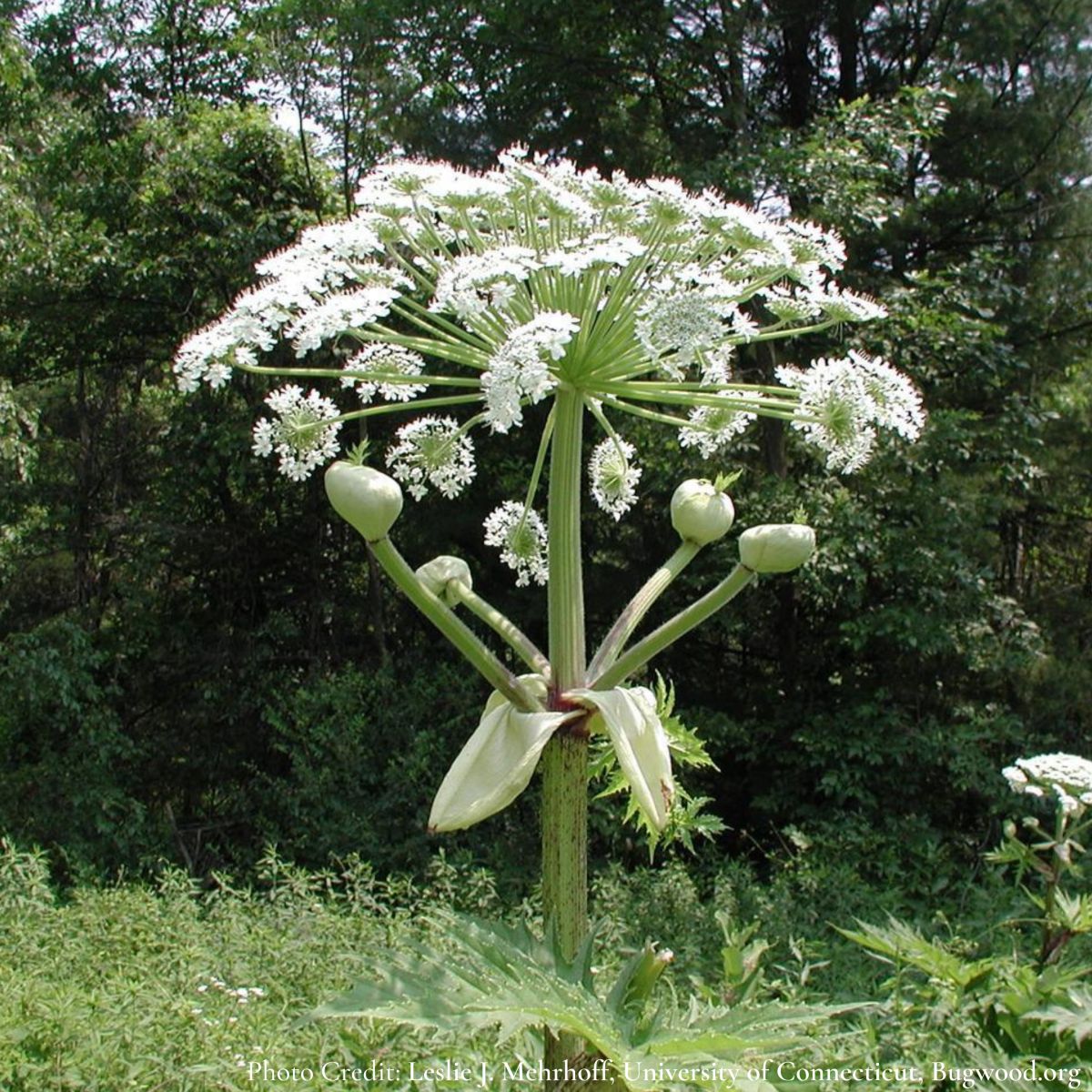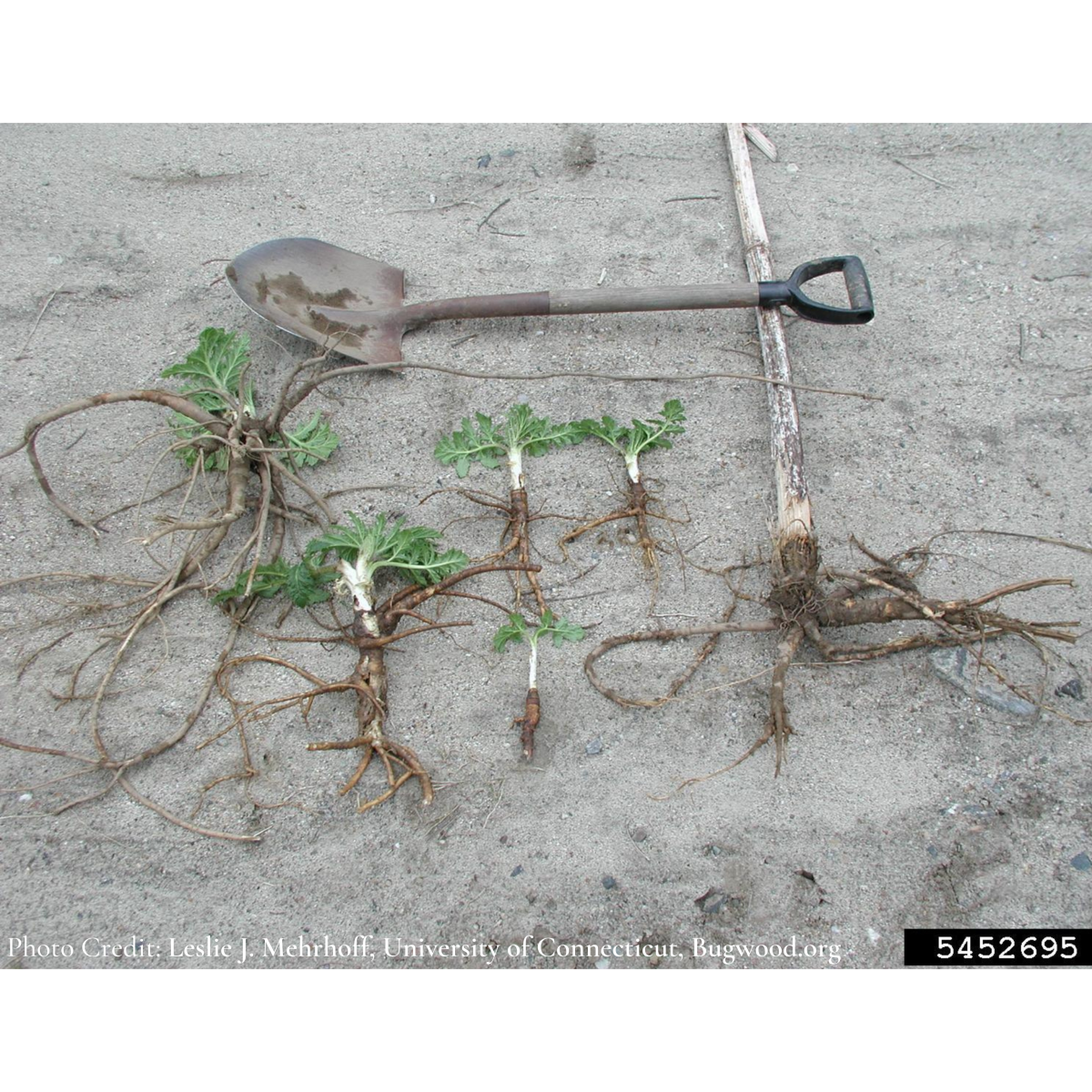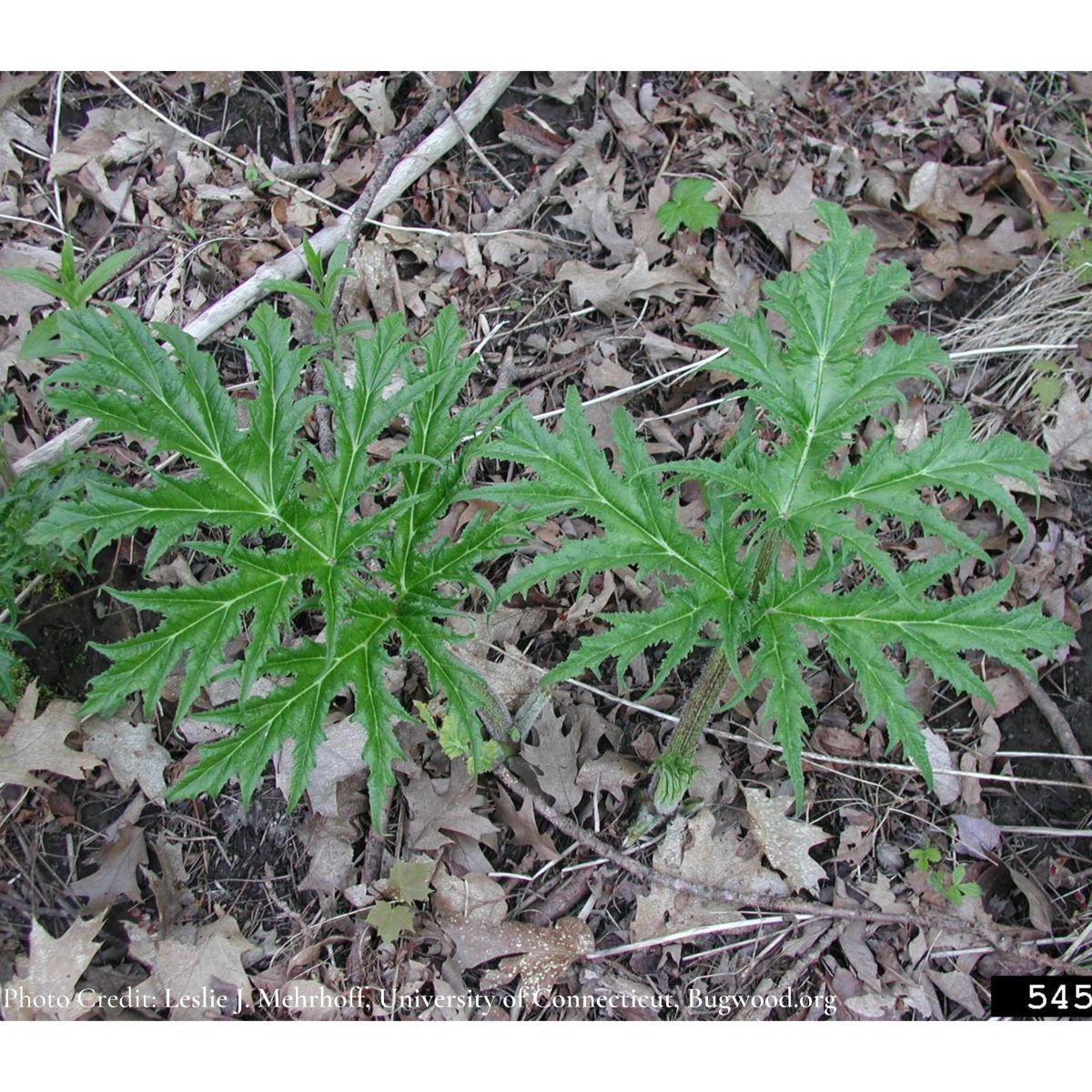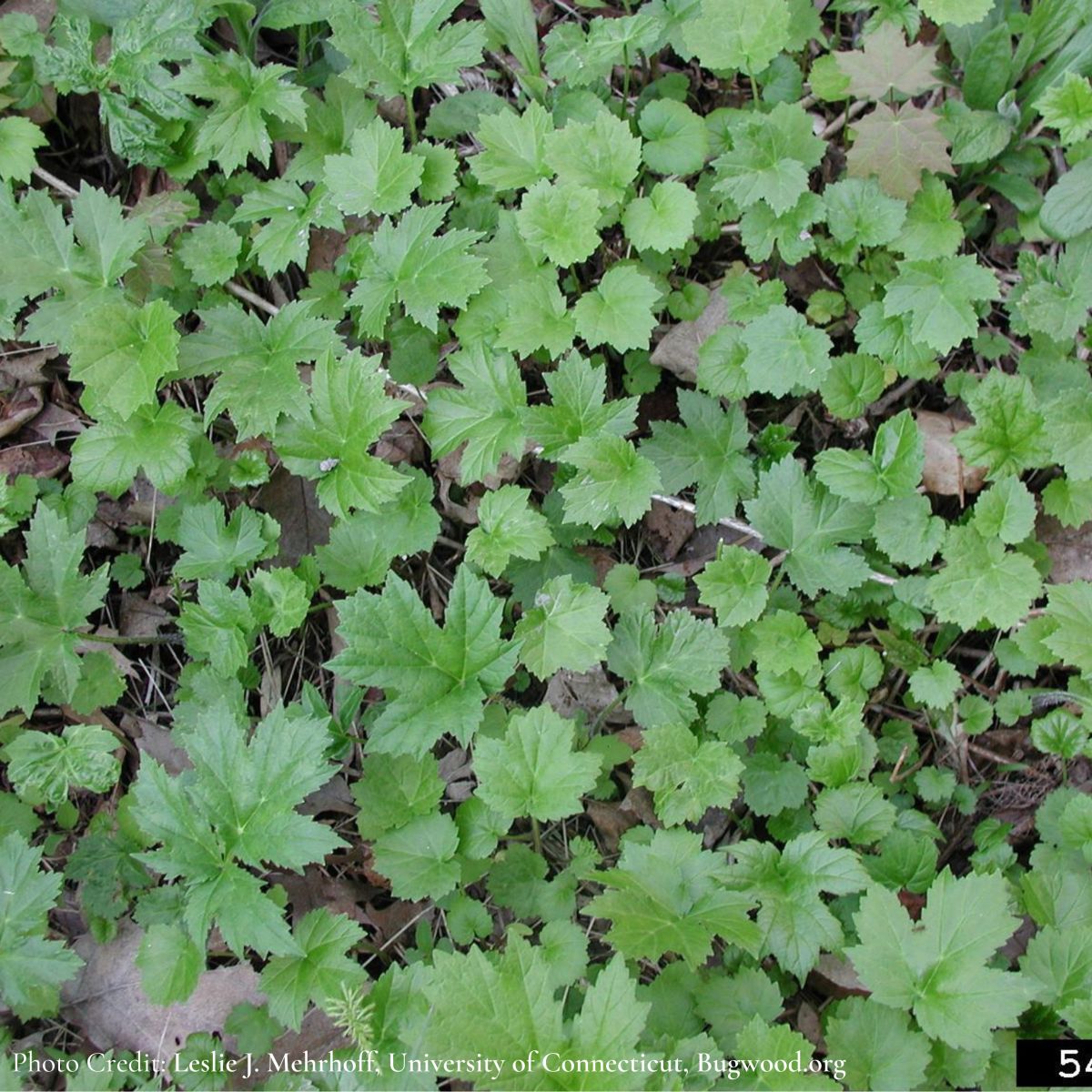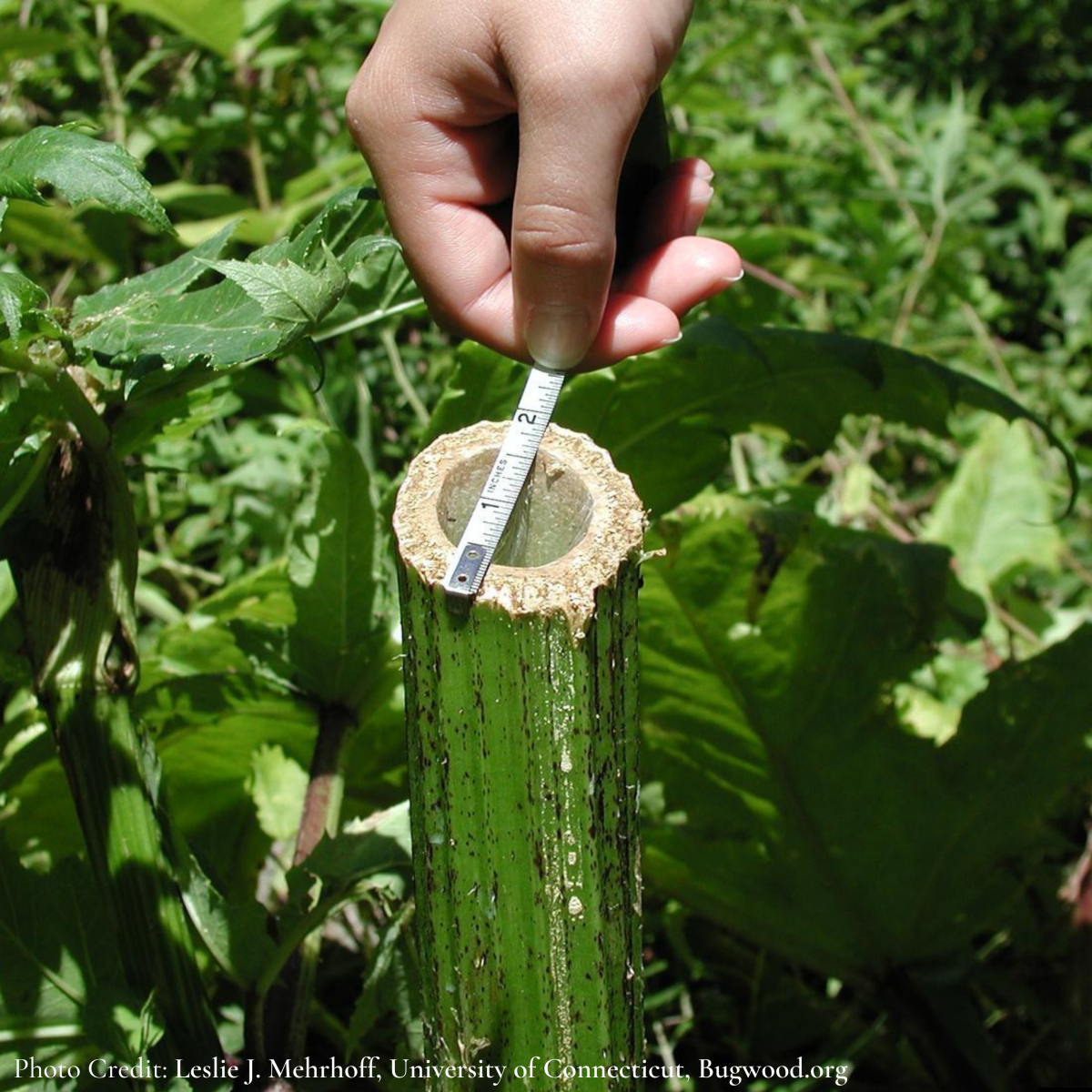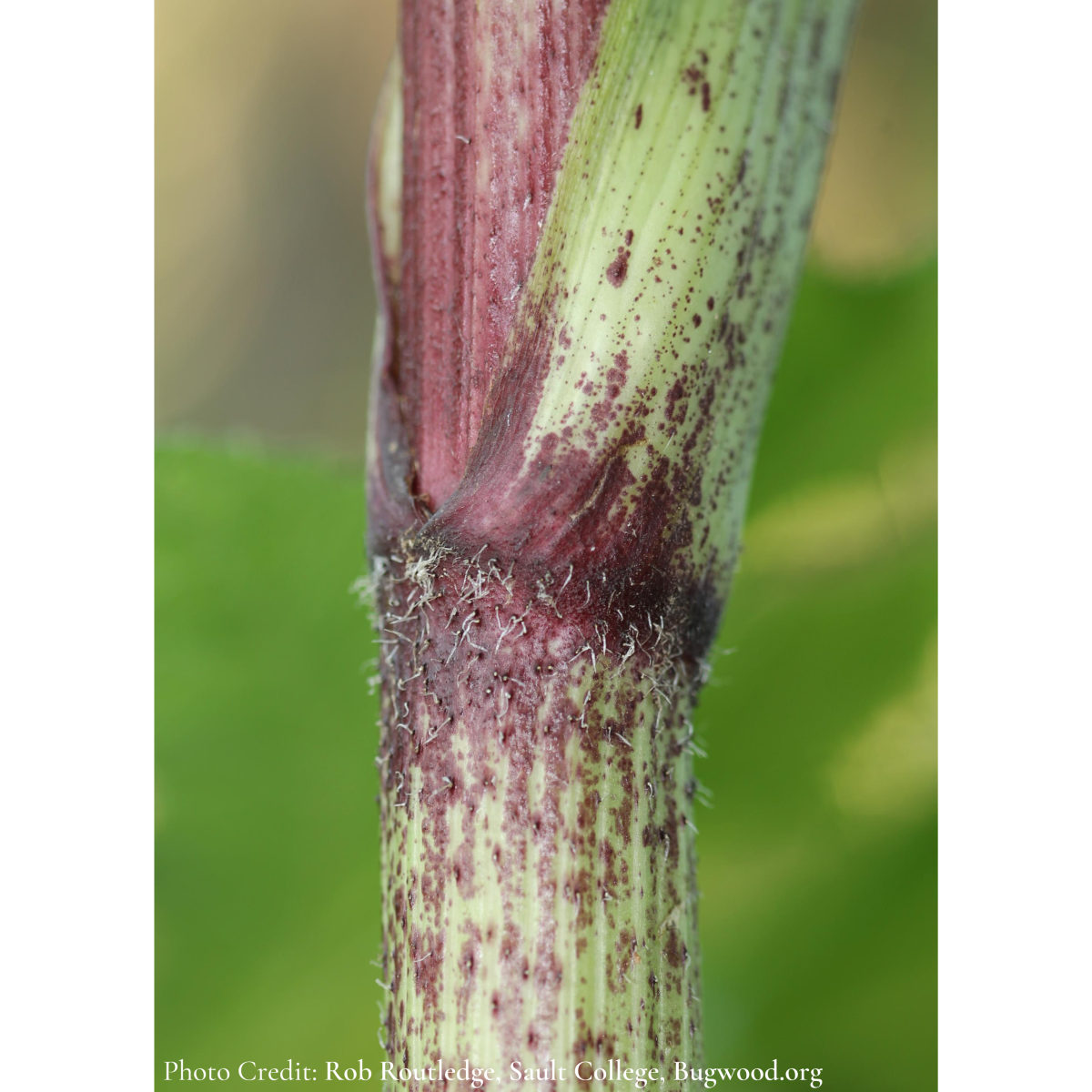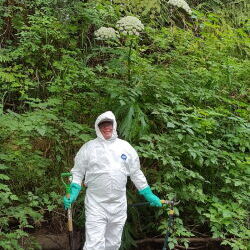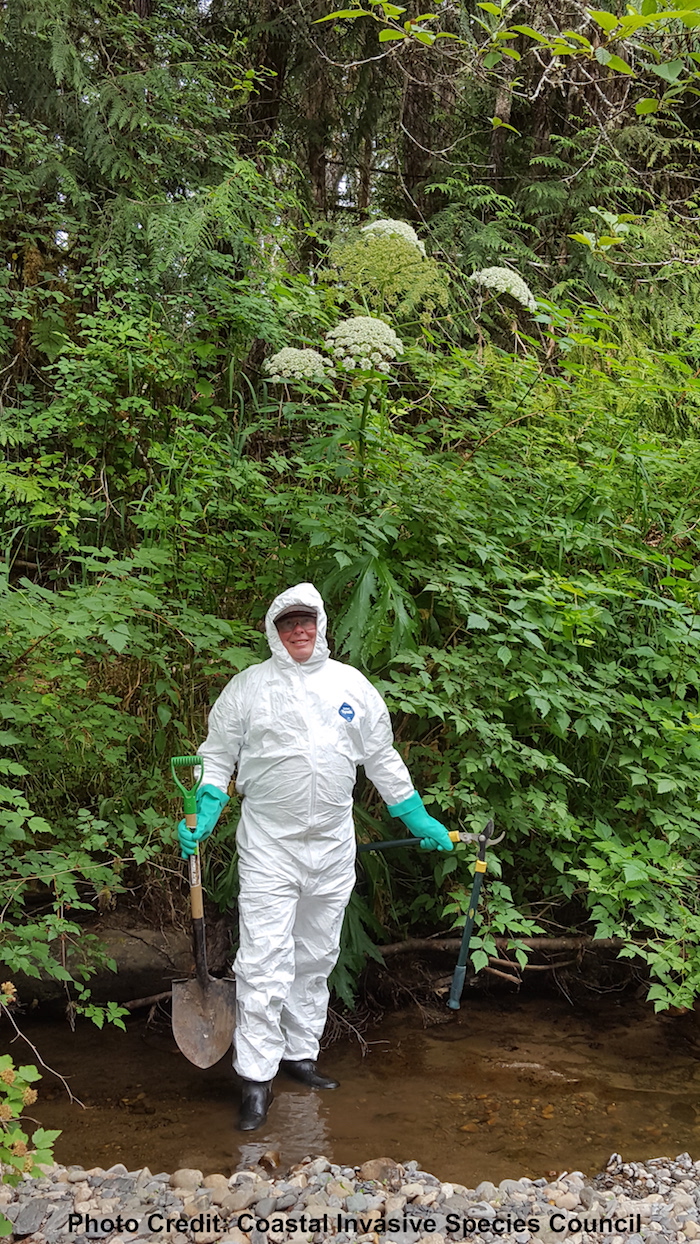
Priority: Prevent
General: WARNING: DO NOT TOUCH THIS PLANT! Giant Hogweed is a perennial herb that grows up to 5 metres tall (16 feet). It looks very similar to the native cow parsnip (Heracleum maximum).
Height: Up to 5 meters.
Flowers: It has large umbrella-shaped flower heads that are small white flower clusters.
Leaves/Stems: The stems are hollow with purple spots and the leaves are dark green, resembling a coarsely-toothed maple leaf.
Root: Tuberous root stalks that form new buds each year.
Giant Cow Parsley
Hogsbane
Giant Cow Parsnip
Cartwheel Flowers
Cow Parsnip (Heracleum maximum) - looks similar but is smaller (1 –2 meters tall). Warning: Cow Parsnip also contains a toxic sap that causes severe burns when exposed to sunlight.
Where did it come from? Giant Hogweed was introduced from Asia as an ornamental plant.
Where does it grow here? It flourishes at the coast and in wet places in BC. It prefers rich, wet soils and can tolerate varied amounts of light. Large stands can form in riparian areas and ditchlines.
Reproduction: It spreads by seed and buds from the crown and rootstock. It produces up to 50,000 seeds.
Spreads By: Seed, which can be dispersed by wind or moving contaminated soil.
Plant Type: Perennial.
- This plant is a health hazard to humans and pets. The leaves and stem contain a poisonous sap that when it comes into contact with human skin and is exposed to sunlight, it causes serious burns and blisters. Blisters can reoccur for up to 10 years later if the area is exposed to the sun again. When working around this plant, full protective gear is necessary (refer to Worksafe BC guidelines).
- Ecologically, hogweed is very competitive and can out complete native species.
- Review your property regularly for this species.
Treatment LRISS does not recommend treating this plant at all. Hire a knowledgeable contractor due to the risk of burns. If removing a small infestation (e.g. less than 1 m square), use rubber gloves, protective clothing and eyewear and follow the Worksafe guidelines.
- Cover bare patches or disturbed soil by planting or seeding with non-invasives.
- Check areas where you have removed invasives for any new plants that year and in future growing seasons.
- Dispose of invasive plants responsibly. Bag them for disposal at the local landfill. Composting and burning are not recommended.
- Contact LRISS for specific treatment recommendations.
BC Government. 1996, 2016 edition. Field Guide to Noxious Weeds and other Selected Invasive Plants of British Columbia. Ninth Edition.
Invasive Plant Council of BC. April 2008. Giant Hogweed Targeted Invasive Plant Solutions.
Sea to Sky Invasive Species Council website.
Okanagan Invasive Species Online website.
Photo Gallery

